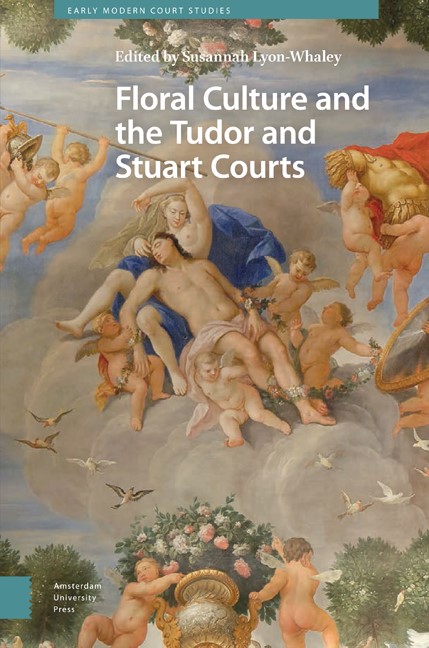2 - Canopied with Flowers : Adorning Court Spaces with Floral Tapestries and Hangings
Published online by Cambridge University Press: 16 April 2024
Summary
Abstract
Textiles’ prominence and status at the royal Tudor court have often been overlooked because of the lack of extant material. However, textiles were a primary way of communicating wealth, taste, power, and meaning, and they formed part of a wide decorative scheme that swathed the palace in cloth, from tapestries and carpets to furnishings and book covers. The importance of textiles to the court is the basis for the exploration of the meaning and significance of the symbols depicted upon them, which invariably included flowers. This chapter will explore the hidden symbolism of floral motifs woven and embroidered upon the cloths of estate and tapestries that decorated the palaces and identified the location of the monarch or immediate royal family.
Keywords: Tudor; royal; textiles; cloths of estate; embroidery; Henry VIII
Quite overcanopied with luscious woodbine,
With sweet musk-roses, and with eglantine:
There sleeps Titania sometime of the night,
Lull’d in these flowers with dances and delight
‒ A Midsummer Night's Dream, act II, scene ISetting the Scene
In A Midsummer Night's Dream, Shakespeare's fairy queen, Titania, is lulled to sleep under a canopy of luscious, sweet-smelling flowers. Her floral canopy is made of woodbine (honeysuckle), musk roses, and the eglantine, or sweet briar, rose. They provide the queen with a beautiful resting spot. However, this floral imagery is more than mere picturesque set dressing. It speaks directly to a language of royalty and status with which many of the play's audience would have been intimately acquainted. Gathered at the royal court for the performance, the assembled courtiers would have been surrounded by tapestries, embroidered hangings, and canopies, woven and embroidered with realistic and stylised flowers. These textiles denoted status, wealth, and magnificence, and all the court knew that the real-life counterpart to Titania's canopy, wrought with flowers in gold and silver, indicated the point of highest status—the position of the king and queen.
The canopy, under which the king and queen sat, was an important symbolic representation of monarchy during the Tudor period. The canopy itself was known as the cloth of estate and it hung behind and above the chair of estate in the presence chamber.
- Type
- Chapter
- Information
- Floral Culture and the Tudor and Stuart Courts , pp. 71 - 94Publisher: Amsterdam University PressPrint publication year: 2024



